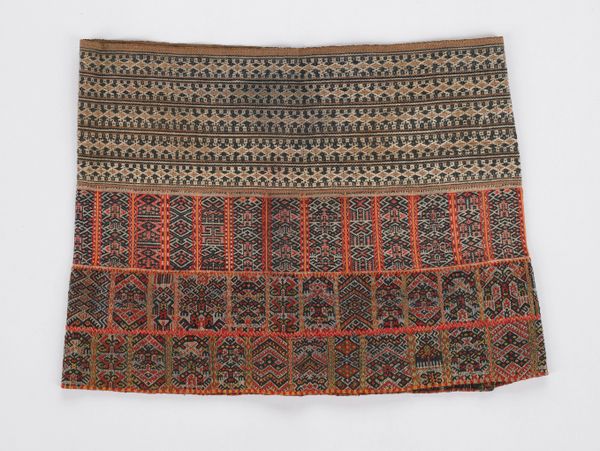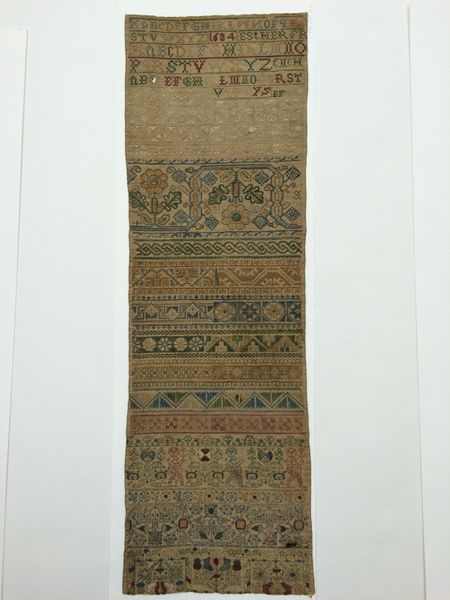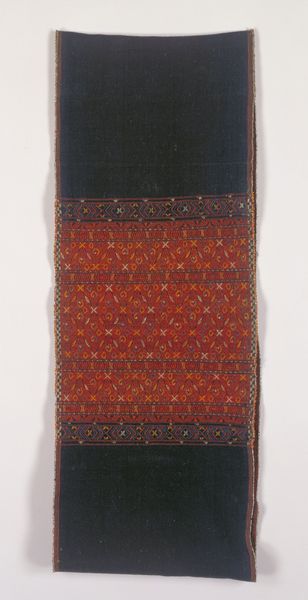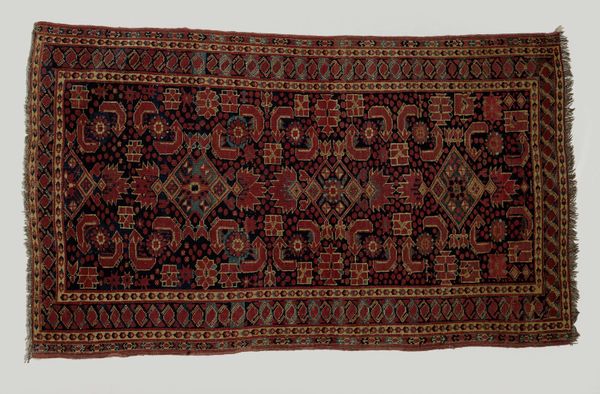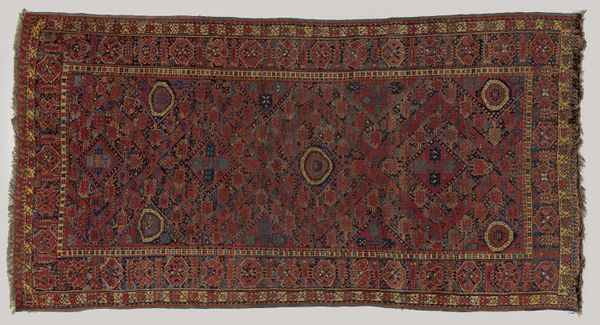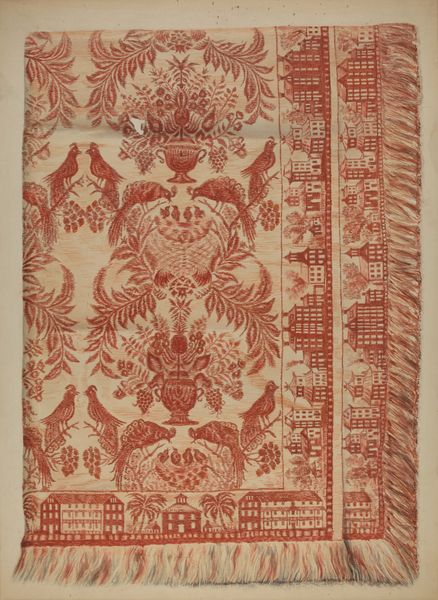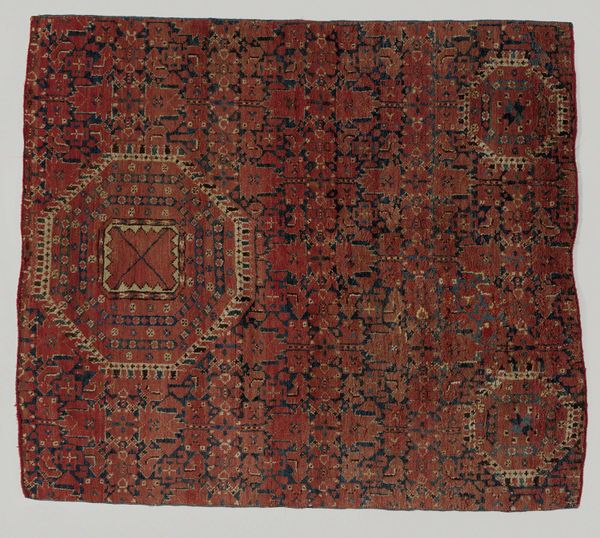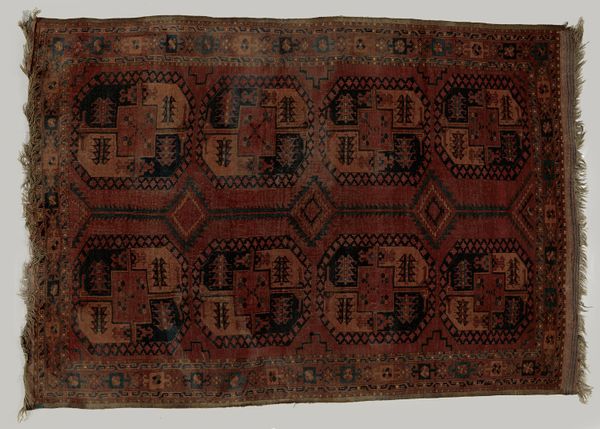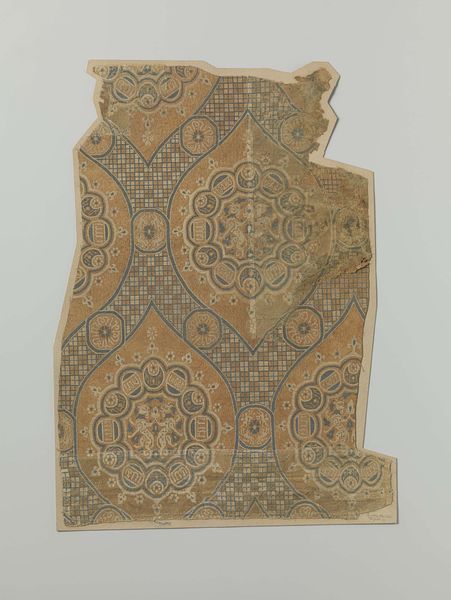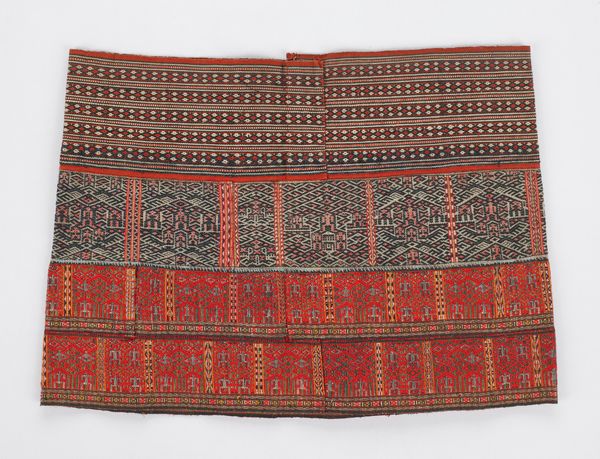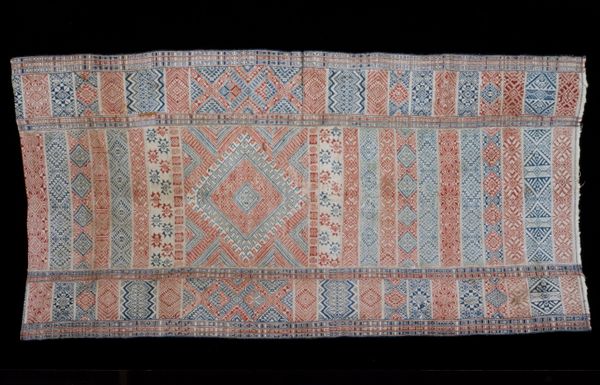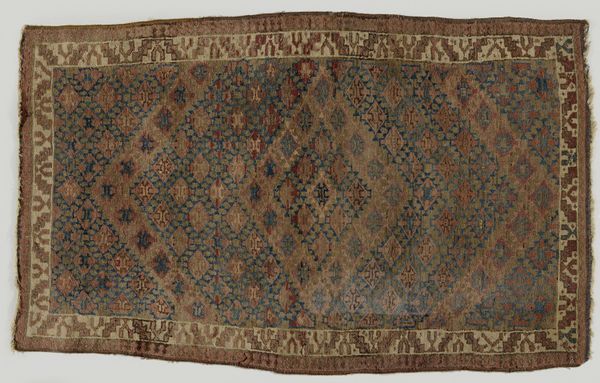
textile, cotton
#
textile
#
geometric pattern
#
geometric
#
cotton
#
islamic-art
Dimensions: 76 3/4 × 33 1/16 in. (195 × 84 cm) (approx.)
Copyright: Public Domain
Curator: What a gorgeous object! It’s so delicate, despite the bold geometric pattern. Editor: Indeed. This textile panel, made from cotton, dates from the 14th to 15th century. The Minneapolis Institute of Art attributes it to an anonymous creator. Think about what stories it holds, moving through time and cultural shifts. Curator: Absolutely! And look at the palette – a dusky blue grounded with earthy reds and browns. This speaks to a very specific aesthetic, reflecting a certain connection to the natural world that's beautifully translated into abstract forms. Are those floral motifs contained within the geometry? Editor: Precisely. What intrigues me is considering where it might have hung, in what kind of space, and who engaged with it on a daily basis. Was it a signifier of status? A devotional object? And what was the role of women's labor in its production, often overlooked by canonical history? Curator: Right, to analyze its cultural currency. Did these colors or patterns have particular meanings to the communities it served? How did class intersect with its value and reception? It’s not merely decorative; it’s imbued with intention and, possibly, resistance. Editor: It definitely prompts a rethinking of traditional art historical boundaries, doesn't it? Bringing so-called “minor arts” to the forefront challenges established narratives. Curator: Completely. This piece invites us to acknowledge the intersection of aesthetic and lived experience and that the political is not just present in monumental artwork. Everything, from architecture to a small cotton textile, reflects back a certain intention and design within larger cultural forces. Editor: Seeing how this piece invites a conversation on value and artistry reminds us of our mission, always striving for the contextual details to give meaning to objects that might otherwise simply appear decorative. Curator: Agreed. Ultimately, this textile embodies a confluence of artistic vision, craft, and the unseen forces of history, compelling us to contemplate how we perceive art.
Comments
minneapolisinstituteofart about 2 years ago
⋮
This cloth is radiocarbon dated to 1347-1467; it was created in Gujarat on handwoven cotton and features two bands of block-printed flowering trees and bushes, further hand-drawn, resist and mordant dyed, and the background over-dyed with red and indigo for a lush, purple ground. The cloth was manufactured for export, primarily to the Toraja region of Sulawesi where the flower design was called daun bolu, referencing the leaf of sirih plant, a key ingredient in chewing betel. There, it would have been used as a ceremonial banner, displayed at auspicious occasions and otherwise kept with a family’s pusaka, or sacred heirlooms cloth (radiocarbon dated 1340+/-40 years) was recovered from burial sites in Fustat, just south of the trading crossroads of Cairo.
Join the conversation
Join millions of artists and users on Artera today and experience the ultimate creative platform.
